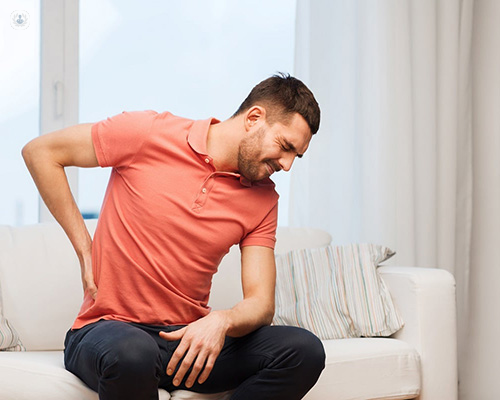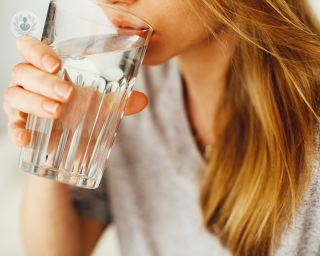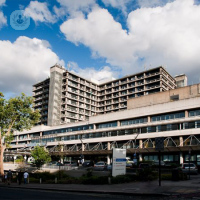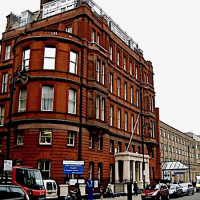Kidney stones
What exactly are kidney stones, and how big are they?
Kidney stones are solid masses, or, in other words, hard stone-like lumps, that form in the kidney or ureter (the tube that connects the kidneys to the bladder) as a result of substances in the urine. The size of a kidney stone can vary, but most typically they are as small as a grain of sand or as big as a pearl.

What are the symptoms?
People who have kidney stones often report many symptoms. The most common ones include the following:
- back pain
- pain on one side of the spine and below the ribcage
- nausea and vomiting
- blood in the urine or burning
- frequent need to pee
What causes kidney stones?
Kidney stones form when there are high levels of calcium, oxalate, and phosphorus present in the urine. When these minerals are present at low levels, they do not cause any issues.
Not hydrating sufficiently, taking certain medications, and having a medical condition that causes an increase in the levels of certain substances in a patient's urine, can all also lead to kidney stones.
How can they be prevented?
There are many suggestions when it comes to trying to avoid kidney stones. Medical professionals will typically advise that you prioritise the following:
- drink plenty of water, ideally up to six to eight glasses a day
- maintain a balanced diet
- avoid alcohol and caffeine
- take diuretic medicines such as hydrochlorothiazide, which should always be supervised by a urologist
How are kidney stones treated?
Treatment will vary according to the size, location, and type of stone. Painkiller prescriptions can be made if needed for patients experiencing pain and discomfort as a result of small kidney stones.
Larger kidney stones, which quite often cause pain or obstruct the urinary tract, will more often than not need emergency treatment. There are different options that the urologist can choose from in relation to removing the stone or breaking it down. The main treatment options for emergency treatment for large kidney stones include the following:
- Lithotripsy by shock waves is a very effective treatment option, as it breaks down the stones in order for them to come out via the urinary tract.
- Cystoscopy and ureteroscopy are treatments whereby the doctor locates the stone and then either removes it or breaks it down into smaller pieces. After treatment, the patient can normally go straight home.
- Percutaneous nephrolithotomy is used to remove the stone, or if the stone is really big, laser is used to break it down. After this treatment, the patient quite often has to stay in hospital for a few days.
How common are they?
It is said that up to 10 out of every 100 people will have a kidney stone at least once in their lifetime.

Do kidney stones always require medical attention?
Small kidney stones, in the majority of cases, pass through the urinary tract without being detected and without the need for medical treatment. For these kidney stones, the recommendation is to drink plenty of fluids.
Do kidney stones form in one or both of the kidneys?
People can suffer from kidney stones in one or both of their kidneys.
What age group do kidney stones affect?
Kidney stones can be present in any individual, but most commonly affect individuals between the ages of 30 and 60.
Are there different types of kidney stones?
There are four main types of kidney stones. Calcium stones, which are the most common, form when part of the calcium not used by the bones and muscles is not eliminated through the urine, and, as a result, accumulates.
Uric acid stones form when there is too much uric acid in the urine, which normally happens when too many proteins are consumed, or after chemotherapy treatment. Struvite stones, which are normally made of ammonia, are far more common in women, and the least common of all types of kidney stones, cystine stones, form due to a genetic disorder called cystinuria.
What can happen if kidney stones are left untreated?
Large kidney stones that are not adequately treated can lead to kidney infection and kidney failure.
When should I seek immediate medical attention?
You should ensure to seek immediate medical assistance if you are experiencing any of the following symptoms:
- severe pain
- high temperature
- shivering or shaking
- blood in the urine
How exactly are kidney stones diagnosed?
The first step in the diagnostic process for kidney stones will typically be blood and urine tests. Any kidney stones that may be passed in the patient's urine will then be collected and thoroughly analysed by a GP. If necessary, CT scans, X-rays, ultrasound scans, and/or intravenous urograms or intravenous pyelograms will be carried out in order to confirm the diagnosis and/or locate exactly where the kidney stone is.
When will I be referred to a urologist?
Patients with kidney stones will be referred to a urologist if they are experiencing a high degree of back and side pain (that is not controlled through the use of painkillers), and a high temperature along with the pain.
Do all kidney stones cause pain?
All kidney stones that are blocking the ureter and that are trying to pass down to the bladder are, in almost all cases, quite painful. However, it has been medically proven that some non-obstructing kidney stones may not cause patients any pain whatsoever.
Am I at risk of having another kidney stone if I have already had one?
Generally, there is a 40 to 50 per cent chance that a person who has had a kidney stone will develop another one within a five-year time frame.

















